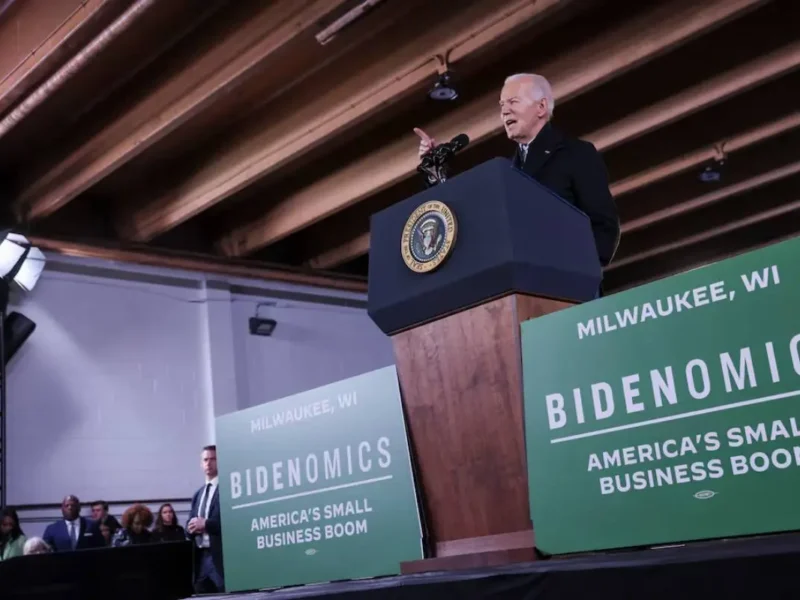
California Streamlines Climate Action Paths
By MARK HEDIN
SACRAMENTO, CA – A new website launched by the state on Earth Day steers electric car buyers to thousands in savings, along with other incentives that make going green more affordable.
With climateaction.ca.gov, a new website unveiled on Earth Day, California is extending its global environmental leadership, providing guidance on making environmentally conscious green choices in cars, homes, and habits, without breaking the bank.
When it comes to things like buying low-emission cars, installing solar panels, or replacing lawns with drought-resistant plants, “perception of cost can be a deterrent,” Lys Mendez, of the state Air Resources Board, said at an ethnic media press briefing called by the governor’s office on April 21 to announce the website’s launch.
Climateaction.ca.gov is intended as a “one-stop shop” to direct people to legitimate cost incentives – subsidies, loans, rebates, and discounts – from trusted sources.
“It’s a government website,” explained Daniel Villasenor, Gov. Newsom’s deputy press secretary, who hosted the briefing.
“The idea is that it’s telling you right off the bat what is the benefit, how to see if you’re eligible and how to start that process at the correct website. We’re trying to just show all the programs that are available in California and provide information on federal tax credits.”
Depending on people’s income levels, where they live, and what programs they pursue, the programs detailed on the new website can save them tens of thousands of dollars.
In one scenario, a car buyer could save almost $25,000 on a car that never needs gas.
Given that “some communities face disproportionate burdens from pollution,” Mendez said, “we’re trying to put our money where our mouth is, because that’s going to be very central to this transition.”
The state had earlier in the day announced reaching the milestone of 1.5 million zero-emission vehicles (battery electric, plug-in hybrid, or hybrid electric cars) purchased in California since then-Gov. Jerry Brown, in 2012, set that as a goal for 2025.
“No other state in the nation is doing more to accelerate climate action than California,” Villasenor said. Of the zero-emission vehicles (ZEVs) sold nationwide this year, 40% were purchased in the Golden State, although that’s only 21% of the new cars Californians have bought so far in 2023.
Making green more affordable
The new climateaction.ca.gov site offers thorough details on the almost-dizzying variety of incentive programs available around the state.
The state’s Clean Vehicle Rebates Project offers, for instance, $4,500 for a hydrogen fuel cell vehicle, $2,000 for a battery electric vehicle and $1,000 for a plug-in hybrid. And if you qualify as low-income, the program goes further: $3,000, $5,500, and an additional $5,500, respectively.
On top of that, the Clean Cars for All program offers up to $9,500 in some instances (such as the Bay Area and the South Coast air quality management districts) for people willing to “retire” older cars – and funds available to fix ones that fail smog tests.
Through the driveclean.ca.gov site that the new website links to, there are specifics on more than 70 California programs. Besides the Clean Cars for All incentives, these range from qualifying for a “carpool lane” sticker even if a solo driver to getting reimbursed for installing a charging station (Sonoma).
More than 30 of those incentives are related to increasing the number of charging stations around the state (currently about 87,000) either through cheaper rates for the electricity used, or other subsidies for installing a home charging station ranging from $150 in Azusa (Los Angeles County) to $3,000 in Marin County and Anaheim.
The site also has links to the federal $7,500 National Vehicle Incentive programs, which currently only support purchases of 11 models of new fuel-cell or plug-in electric cars, but many more if they’re leased.
Villasenor explained that by “stacking” the federal $7,500 tax credit, $7,500 from the Clean Vehicle Rebate Project, and up to $9,500 from Clean Cars for All, it’s possible to reach a $24,500 discount on a car that won’t cost you a dime at the fuel pump.
Then there’s the state’s Clean Vehicle Assistance Program that provides grants and financing for low-income families buying new or used ZEVs. This program, aimed particularly at hard-hit communities, also includes money for charging stations, and its grants don’t need to be repaid.
Targeting water & energy savings
But the state’s climate change programs also extend to water and energy-saving efforts, also detailed on the climateaction.ca.gov site.
Leuwan Tesfai, of the state Public Utilities Commission, turned to the home energy programs detailed on the site, such as money-saving and climate-impact-reducing tips and links to programs through utilities San Diego Gas and Electric, Southern California Edison and PG&E. Among them are some that will pay people to reduce their energy use during certain times of the day amid “heat events.”
Others provide financing for energy efficiency upgrades including insulation and new appliances and home weatherization.
Among the programs particularly targeting low-income communities such as tribal communities and others impacted by pollution, the Disadvantaged Communities Green Tariff Program offers clean energy discounts.
“As you know, we set the example for the nation and in many instances for the world through our ambitious climate goals and our efforts to tackle some of the toughest environmental challenges,” said Yana Garcia, state secretary of environmental protection, who described no-cost rooftop solar installation for homeowners, solar credits for renters and rebates for replacing lawns with drought-tolerant plants.
“We have lots of different programs available, more than just those listed here,” Villasenor said, adding there is an expectation these programs will continue to expand.
“These are the programs that we felt are some of the more popular ones that we’re constantly getting questions on. We wanted to get this off the ground and launched on Earth Week.”
The site currently employs Google’s 120-some languages of computer-generated translations, but that will also be upgraded, with the currently in-the-works Spanish version coming soon. (Ethnic Media Services)




